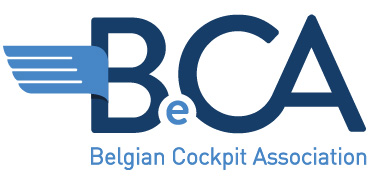The Belgian Cockpit Association (BeCA) has been at the forefront of the debate about the Aerotoxic Syndrome. Rudy Pont took an active role in the recent conference on this subject. Read the full story to understand what progress we made and download our “post smoke/fume-event QRH” to know what steps to take when you would be impacted.
On 17-18 September 2024, the fourth International Cabin Air Conference took place at London’s Imperial College. Around 200 people attended the event, including airlines (e.g. TAP Portugal maintenance), OEMs (e.g. Rockwell Collins on the B787 bleed-free design), associations, authorities (e.g. UK CAA), academics, journalists, and many other interested parties.
Cabin Air Quality is a contested topic for the industry. Reports that bleed air can be contaminated through leaks in the bleed air system, date back to the 1960’s (!) when the US Air Force conducted thorough research on the topic. Unfortunately, commercial aircraft manufacturers judged that the design benefits of using engine compressor air outweighed possible negative health effects. Meanwhile, the adverse effects have been well documented and labelled under the term ‘Aerotoxic Syndrome’. Despite the evidence -air crew keeps getting sick- the aviation industry claims there is nothing to worry about, due to their fear of possible litigations. What if manufacturers, airlines and authorities must acknowledge that they have been exposing the flying public and staff to toxic substances for decades? This exactly what happened with asbestos and smoking.
The conference agreed upon the need for protection and detection in the form of bleed air filters and detectors. Furthermore, Nyco presented a new type of oil containing far less toxic substances, providing an excellent alternative for existing products.
On the short term, the need for a standardized medical follow-up of crew should be established as soon as possible.
On the long term, the conference expressed the need to move towards bleed-free aircraft such as the B787.
BeCA has been and will remain very active in tackling this issue. Cpt. Vinciane Cabaret (BeCA vice-president) has spent hours of her time in drafting and reviewing a standard for Cabin Air Quality on civil aircraft – later reclassified as a Technical Report – in the dedicated CEN committee (EU standardisation body). Meanwhile, Cpt. Rudy Pont (BeCA Air Safety Committee coordinator) has published a post-smoke/fume event procedure in close cooperation with the Global Cabin Air Quality Executive (GCAQE) based on the proposed protocol by Burdon, et al.
This procedure in the form of a QRH can be used by air crew after an event and gives precise guidance on what medical tests should and could be conducted after being exposed to contaminated air. Additionally, it contains a standardised patient record form which, if collected at national or airline level, can be used for further research.
The problem now is that -while a technical investigation is conducted- data on the medical effects is hardly ever collected. According to BeCA, this is contrary to what is expected from responsible operators both in terms of aviation Safety Risk Management as in terms of Occupational Health and Safety at a workplace.
The procedure is intended as a template and as a discussion starter between aviation medical authorities, pilot associations and airlines. The purpose is to see how this data can be captured, and how crew and passengers could receive a proper medical follow-up.
BeCA is happy to see that it already has been adopted by the American Airlines Pilots Association .
We will continue working on the prevention of cabin air contamination and the recognition of Aerotoxic Syndrome in the International Classification of Disease (ICD-11), so that crews can receive adequate follow-up after an event.


